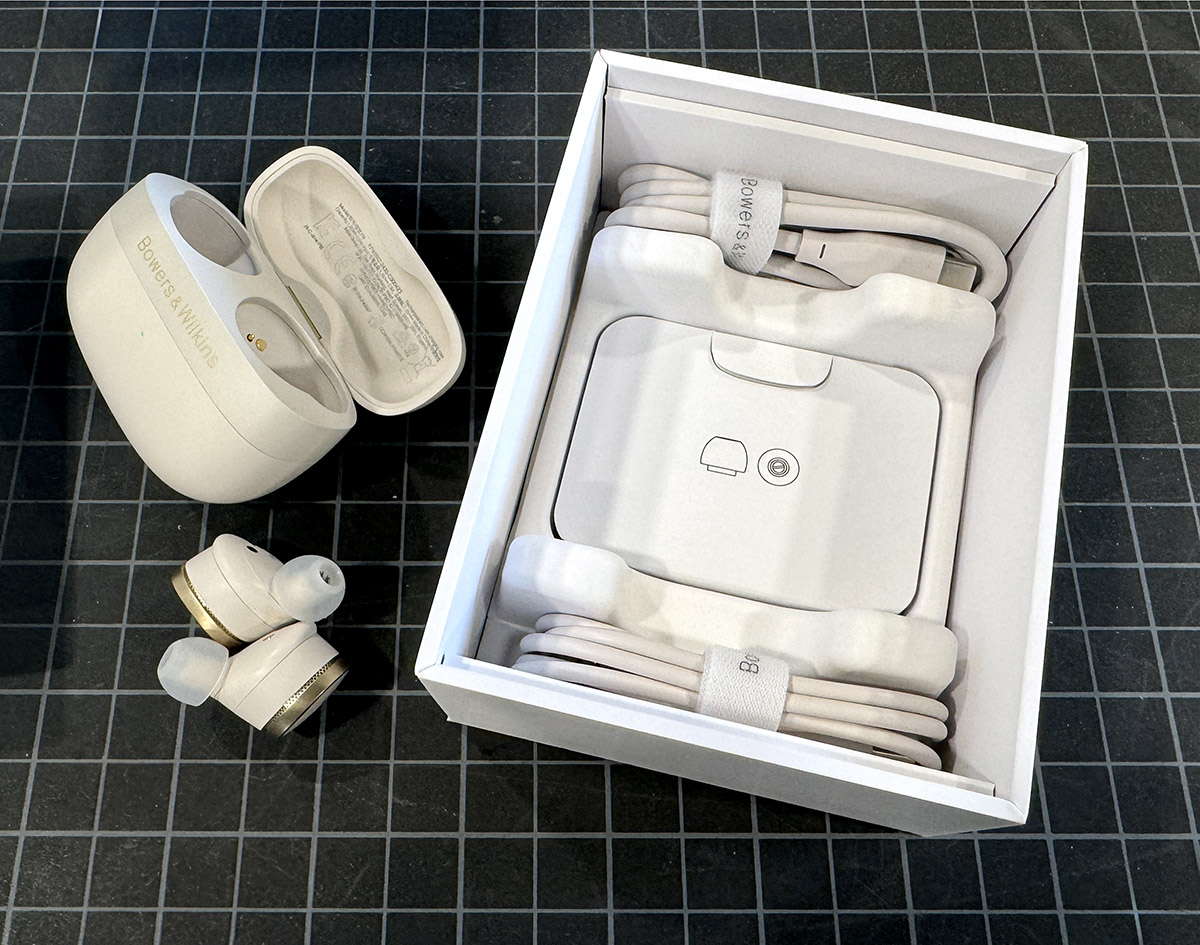REVIEW – It’s hard to imagine that as little as 7-10 years ago, most earphones were wired requiring them to be physically connected to an iPod or other portable music player. Today, however, wireless IEMs (in-ear monitors) are as common as ever. It seems everyone owns at least one pair—or more. And most of them sport ANC (active noise canceling), which is practically a requirement today. At a glance, the features of IEMs are fairly similar despite the price differences. What’s not similar is comfort and audio quality. Differences in audio (real and perceived) in countless IEMs cover a wide range. Plus, the experience of listening to a great-sounding pair of earphones can be ruined by discomfort, which is where Bowers and Wilkins come in. Their latest flagship Pi8 IEMs are a decent step up from the previous Pi7 S2 in sound quality. Comfort, however, is another matter entirely.
What is it?
The Bowers & Wilkins Pi8 in-ear true wireless earbuds are the latest from an audio company famous for audio quality—from the iconic Nautilus and Zeppelin speakers to the (relatively) affordable 600 series bookshelf speakers. When B&W entered the headphone and earbud arena, they quickly became known for raising the bar of what was possible with IEMs.
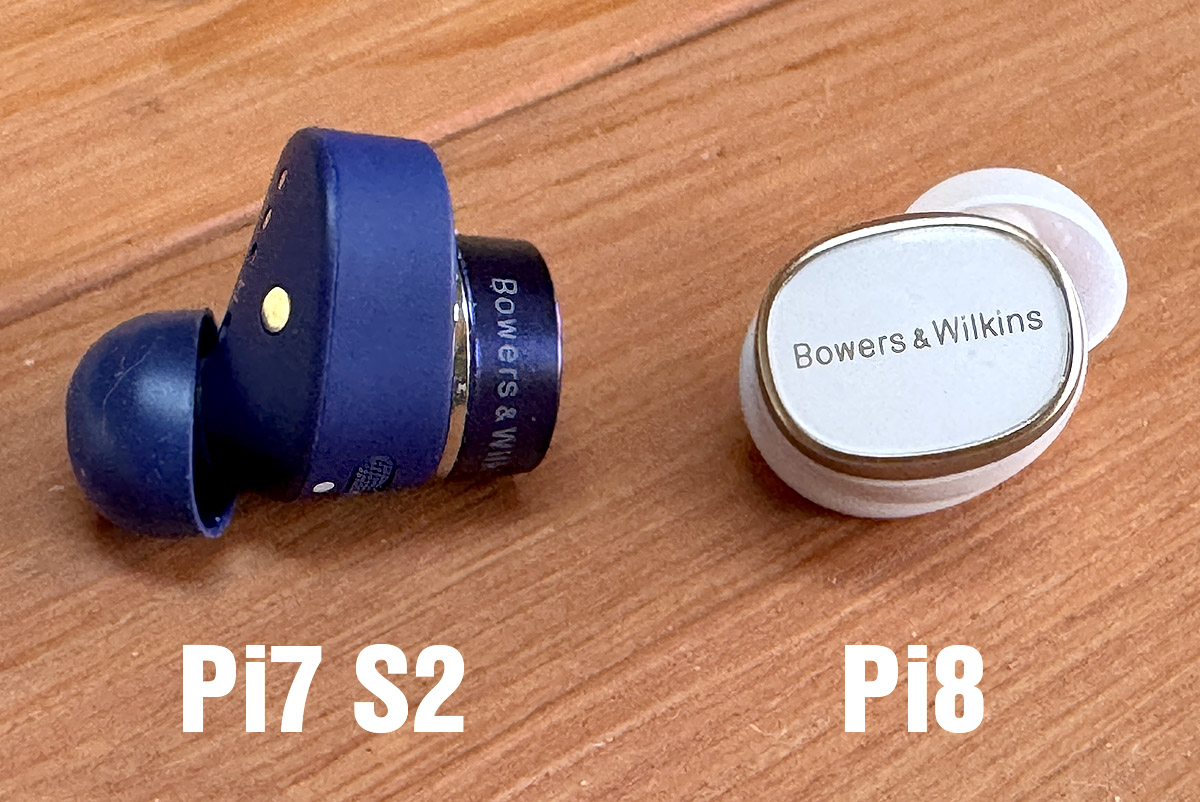

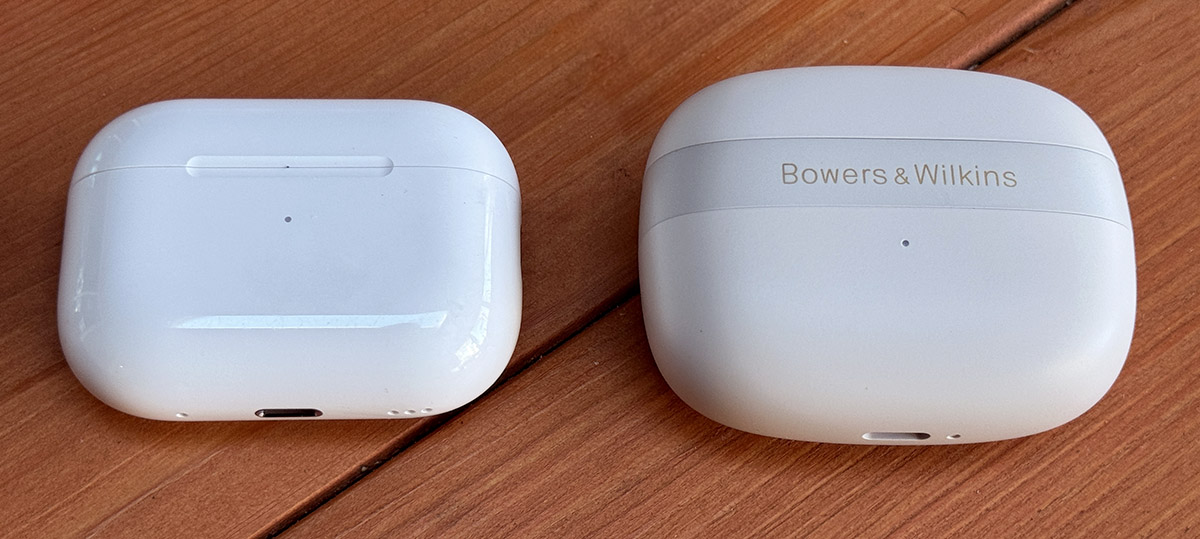
The Pi8 earbuds are a continuation of the P series of IEMs. While the Pi7 and Pi7 S2 earbuds were almost identical in fit, the Pi8 buds have been completely redesigned. The case is more rounded (similar to AirPods Pro) and slightly smaller than the Pi7 case. The earbuds are updated even more. Gone is the strange (but still comfortable) shape. The Pi8’s shape is a more ergonomic oval shape with rounded edges.

Upgrades include larger speaker drivers, 32-bit DSP (digital signal processing), aptX lossless Bluetooth (Android only), and increased battery life.
4 colors are offered: Anthracite Black, Midnight Blue, Jade Green, and Dove White (this review). Four silicone ear tip sizes are included.
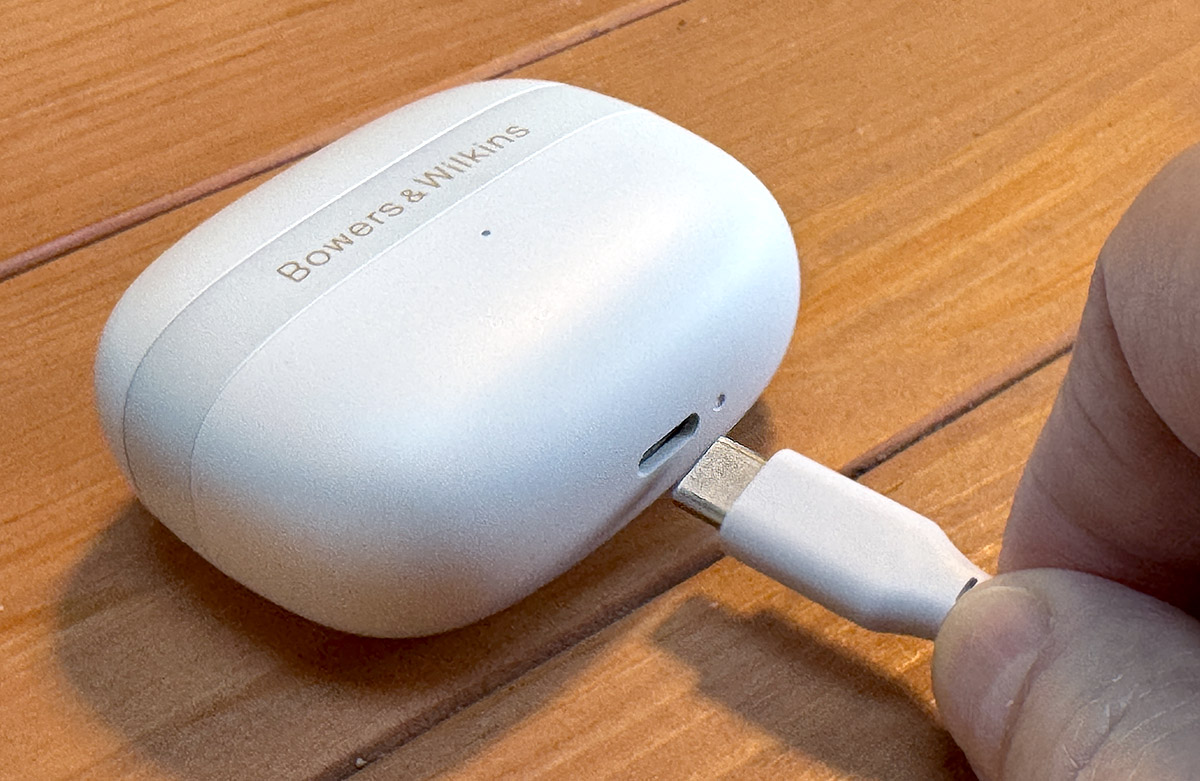
The color-matched case can re be charged using the the supplied USB-C cable or wirelessly. The case provides an extra 13.5 hours of battery life to the 6.5 hours of battery of the earbuds. Note that the 6.5 hours is with ANC on. Charging time is rated at 2 hours (15 minutes for 2 hours of play).
As with the Pi7 S2 earbuds, the case works as an audio retransmission system allowing music to be streamed from non-Bluetooth sources—provided they have a 3.5mm earplug port. More on this later in the review.
The Pi8 earbuds rely on the “Music | Bowers & Wilkins” app (iOS and Android) as well as Bluetooth. The app features controls, such as tap functions, an Equalizer, a Wear sensor, and ANC to name a few. Music can be stored within the app’s built-in Library.
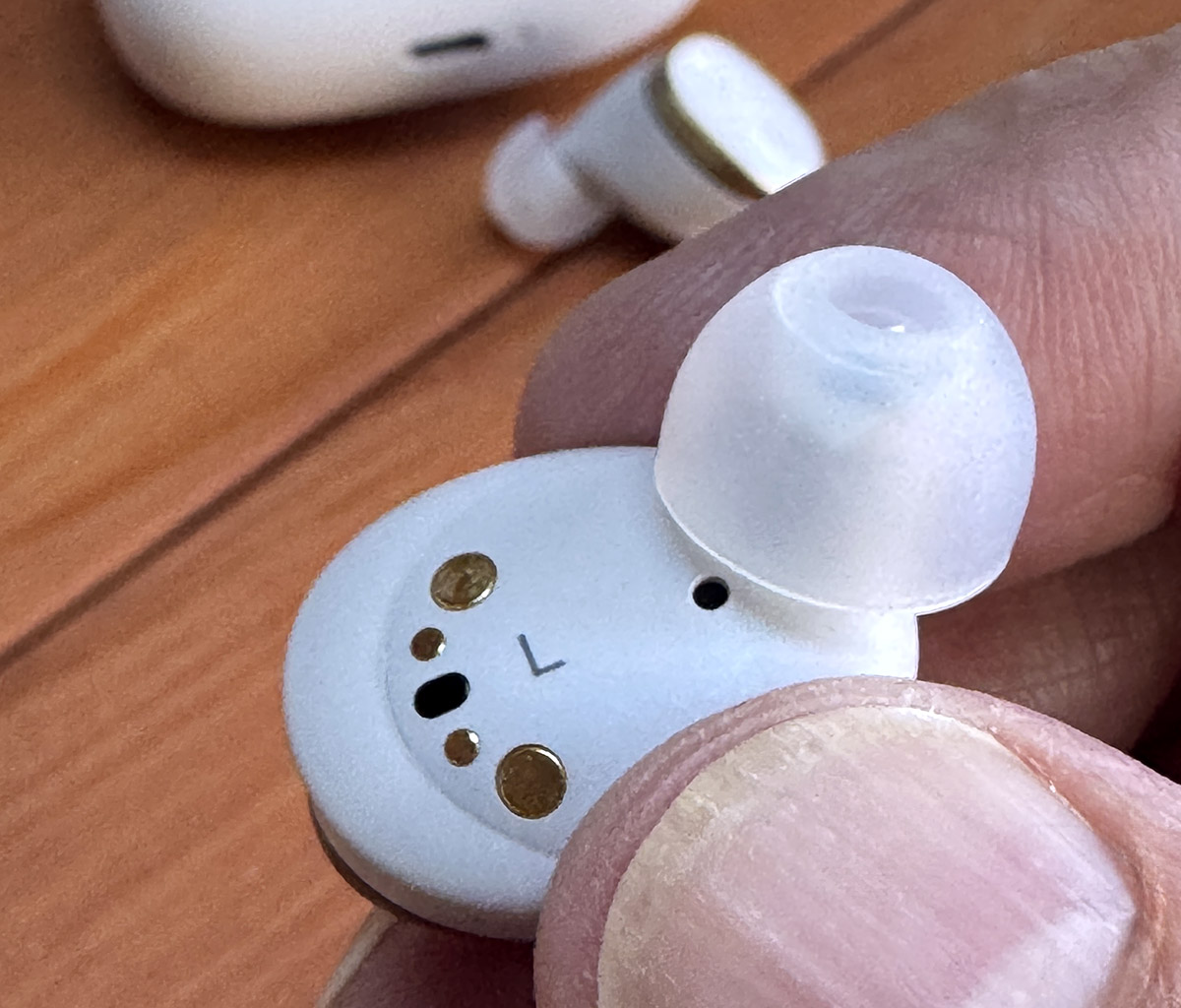
Each Pi8 earbud has 3 mics for both ANC and phone calls.
B&W has replaced the balanced armature speaker and 9mm cone from the Pi7 S2 with a 12mm carbon cone per earbud. Carbon cone technology was first used in the Px8 over-ear headphones.
The Pi8 supports both Bluetooth aptXTM Adaptive (at 24-bit/96kHz) and aptX Lossless for better audio quality (more on that later).
What’s included?
- Pi8 earbuds
- Case
- 4-sized tips
- Retransmission cable
- USB-C to USB-C cable
- Manual
Tech specs
Click to expand
- Dedicated DSP and amplifier/DAC
- 32-bit audio connection
- 5-band EQ
- Bluetooth 5.4 with aptX
- Multipoint connectivity
- Active Noise Cancellation
- Audio retransmission from the charging case
- Wireless and USB-C charging
- Fast charging support
Design and features
The build quality of the B&W Pi8 earbuds is superb. For what B&W charges, it better be.

Let’s talk about some features. The Pi8 earbuds have a decent amount of battery life from both the buds and the case. Nothing earth-shattering, but comparable to others in this size range. The case can be charged either via USB-C or wirelessly. I’m not a fan of wireless charging, but it’s there if you like it.
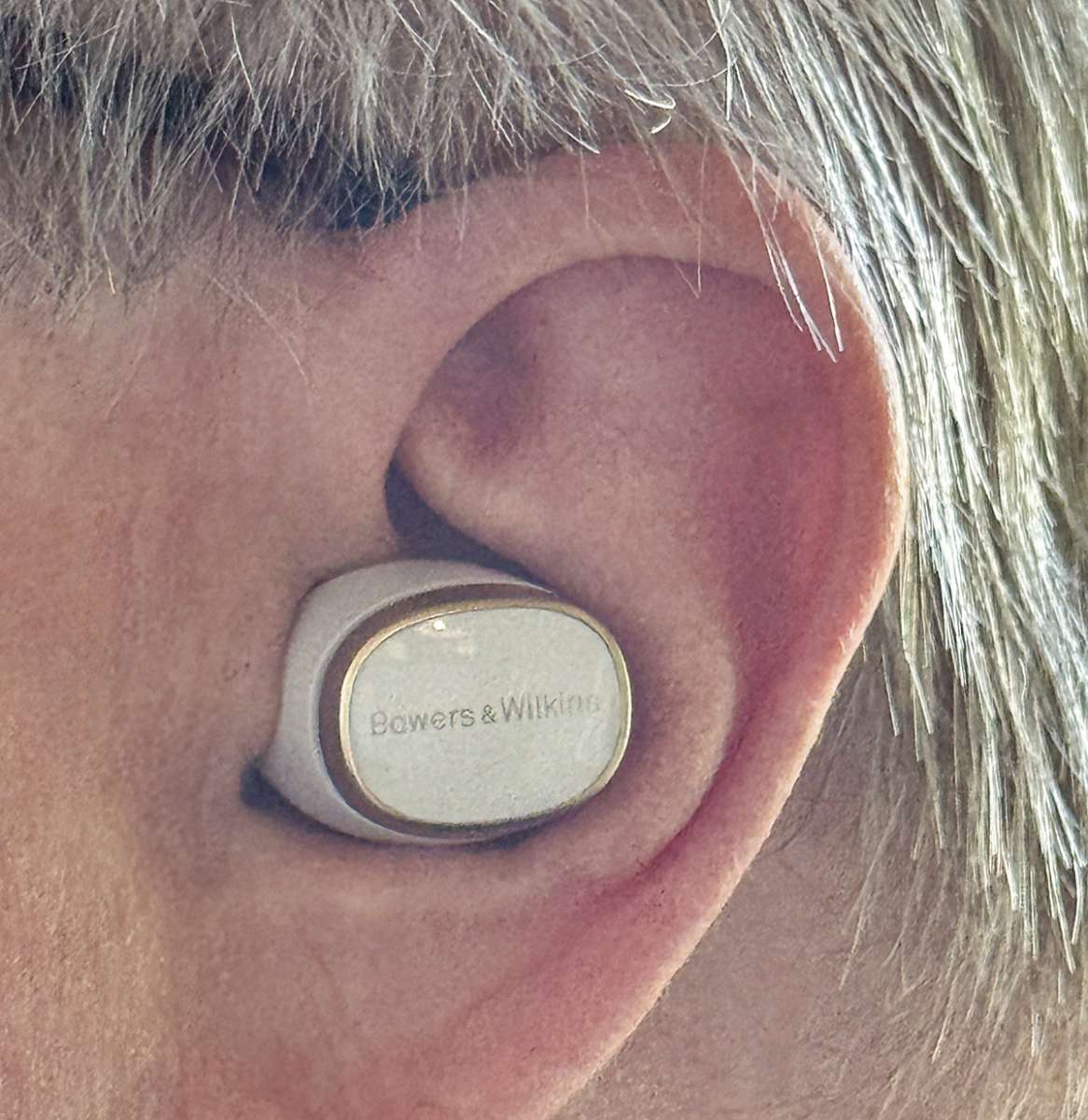
Let’s start with this: To say that the comfort of the Bowers & Wilkins Pi8 in-ear true wireless earbuds is an improvement is an understatement. Yes, the previous flagship B&W Pi7 S2 earbuds were comfortable, but they can’t compare with these. I can wear the Pi8s for hours and not think about them being in my ears. That’s beyond comfort. I’ve yet to wear earbuds as comfortable as these—with the exception of Apple’s AirPods Pro earphones. High praise, indeed.
Okay, comfort is great. That’s covered. How do the B&W Pi8 earbuds sound? That’s a bit more subjective. B&W got rid of the balanced armature speaker that helped make the Pi7 S2 earbuds a great-sounding hybrid model. I’ve written extensively about armatures vs dynamic speakers in earphones. Usually, a hybrid of the two speaker designs sounds good to great.

Maybe borrowing carbon speaker tech from the Px8 headphones convinced B&W they no longer needed an armature driver. In this case, I agree. Whatever tweaks B&W has done to the speakers, they exhibit none of the overly bassy audio that dynamic speakers can sometimes exhibit. Yes, the Pi8 earbuds are geared towards a more warm, bass-friendly sound, but the high, mid, and low frequencies are as balanced as you could want.

If you prefer, audio can be further tweaked in the Music | Bowers & Wilkins app with its built-in Equalizer. The EQ is a basic affair, with 5 adjustment bands. The app offers what B&W calls True Sound—turning off any EQ for a more balanced sound as the app states. I tend to agree.

Active Noise Canceling (ANC) is good. “Pass Through” (similar to Apple’s Transparency mode) allows outside noises to come through. The difference between ANC and Pass Through is not as dramatic as it is with Apple’s AirPods Pro earbuds.

This app allows various control over the earbuds. The Pi8 earbuds offer different tapping/holding functions. While these can be customized within the app, it’s quite limited.
The app doesn’t offer anything I would find surprising. Various music services and radio stations are available as well as the usual high-res streaming sources. Tidal, Qobuz, Deezer, Pandora, and Soundcloud are available. Personal music can also be stored within the app, but I don’t use any of it. Apple Music is my go-to streaming service. I pay for it and am a big fan. Others may prefer Spotify. Either way, these top two services are perfectly fine for the Pi8 earbuds. I don’t miss Tidal or other hi-res sources. I would feel different using the B&W Px8 headphones (wired only), but that’s it.
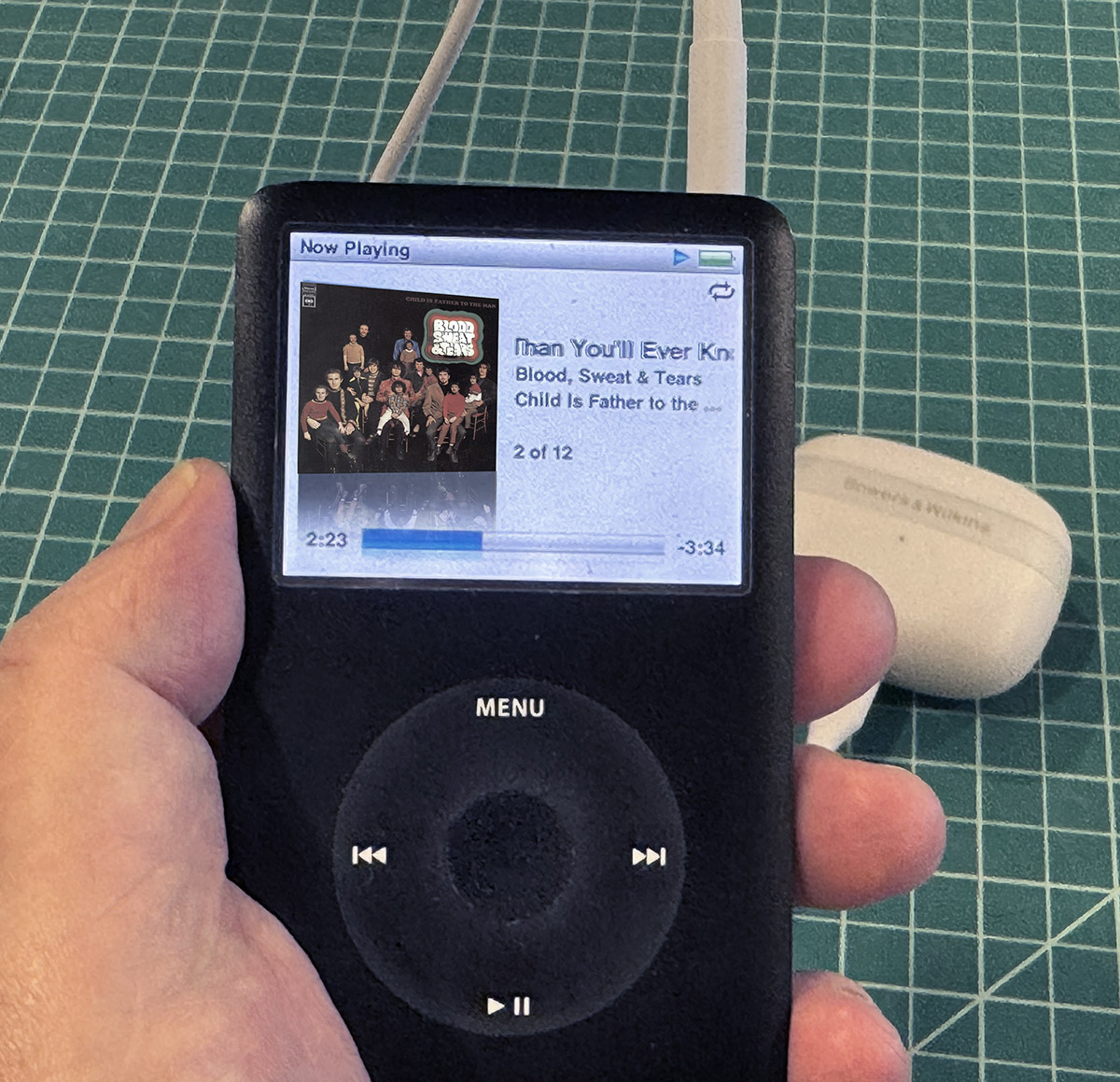
One source I have used is my older Classic iPod. Yes, you read that right. B&W has created magic with what they call “Wireless audio retransmission”—a way to use the case as a wireless conduit between the Pi8 earbuds and a non-Bluetooth source, like an iPod, receiver, or other older source with a 3.5 mm audio port. When wired to the case, my iPod became a “wireless” device. The only minor caveat is the volume is slightly lower than real wireless sources. If you have an older iPod with its hard drive full of tunes, you can relive the days of being hard-wired to your music—now wirelessly!

Bowers & Wilkins touts that the Pi8 earbuds sport the latest version of aptX Bluetooth. aptX Lossless is a high-quality audio codec (type of Bluetooth) that B&W states gives music a CD-quality sound or better. True or not, Apple only supports its own AAC wireless codec (hi-res ALAC wired). They have never supported aptX of any kind. After listening to my favorite music for weeks with the Pi8 earbuds, I realized it doesn’t matter anymore. Bluetooth (aptX or AAC) has improved much over the past few years. It’s difficult to hear any quality difference using different Bluetooth codecs. Audio expert John Darko explains all this Bluetooth stuff better than anyone. Give it a read if you want to geek out. Bottom line: If you belong to the Apple Borg (like me), don’t let aptX—or lack of it— influence an earphone/headphone purchase decision. You probably won’t hear the difference.

One of my go-to albums while growing up was Blood Sweat and Tears’ debut album “Child is Father to the Man”. I rank this masterpiece equal to The Beatles’ “Sgt. Pepper” album. You may not agree, but leader Al Kooper’s mix of horns, funk, jazz, and psychedelia was—and still is—a ground-breaking onslaught of in-your-face musical genius. The guitar work in “I Love You More Than You’ll Ever Know” is note-perfect and the Pi8 earbuds let you hear the slightest mini distortions of the guitar strings overlaying the accompanying Hammond organ keyboards and backing female vocals. It all sounds magical and totally engaging.
If you want to go for all-out bass, there’s nothing like Billie Eillish’s “bad guy”. This cheeky, yet catchy tune will test many speakers. Any distortion caused by her use of uber-bass lines would make this song unlistenable. No distortion here. The Pi8 earbuds manage to make the song more of a fun listening experience than it would otherwise be. It’s hard to feel bass in the body using only headphones/earphones but the Pi8s come close.
Patrick O’Hearn—one of my favorite electronic musicians—just released “Quatro Amici”, an EP of 4 remixed/renamed tracks from his 1985 “Ancient Dreams” CD. I could listen to these all day on repeat. The Pi8 earbuds reveal new subtleties in the songs that were either missing in the originals or couldn’t be appreciated using older headphones. It’s a lot of fun hearing familiar music in ways that make it both fresh and new at the same time. Only quality earphones can do that and the Pi8 earbuds excel at it.
What I like about the Bowers & Wilkins Pi8 in-ear true wireless earbuds
- Well made
- Comfortable over many hours
- Great sound
- Wireless Audio Retransmission
What needs to be improved?
Final thoughts
This review is long, but there’s a lot to say—and like—about the Bowers & Wilkins Pi8 in-ear true wireless earbuds. The improved comfort of the redesigned shape makes these a larger upgrade than the Pi7 was to its previous version. I’ve had these in my ears—with music volume set low—giving me hours of effortless background listening on the go.
Yes, the Pi8 earbuds are expensive. Note that if your budget is telling you “no way”, consider the slightly lesser Pi6 earbuds for $150 less. They have the same shape and comfort level as the Pi8 earbuds.
Price: $399
Where to buy: Bowers & Wilkins and Amazon
Source: The sample of this product was provided for free by Bowers & Wilkins. Bowers & Wilkins did not have a final say on the review and did not preview the review before it was published.


